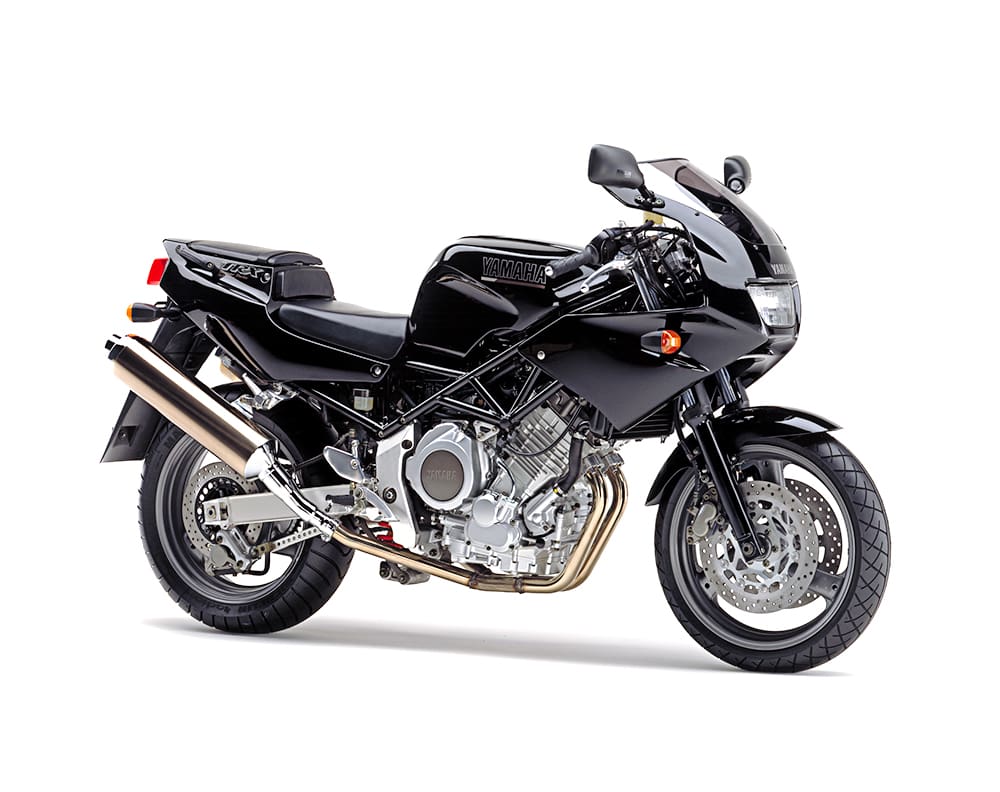Yamaha’s TRX850 is one of those bikes that should have been held in higher esteem for Aussie riders
Yamaha’s TRX850 is one of those buys that represents excellent secondhand value almost two decades after the model was discontinued.
The ‘Trixie’ was the evolution of Yamaha’s twin-cylinder thinking. The company had tremendous success with the TDM850 and the Super Tenere before that, and the TRX essentially used the exact same powerplant when it came to Australia in 1996.
That engine was a five-valve parallel-twin measuring 849cc, but rather than a conventional crank, the TRX came with a 270° crank (basically one piston is a quarter of a cycle behind the one at TDC). The idea was to make the power pulses coming from the 89.5 x 67.5mm engine mimic those of a V-twin, or more to the point, a Ducati V-twin.
The Trixie was therefore Yamaha’s crack at the Ducati marketplace. It even came with a Ducati-style trellis frame, which was relatively simple but also rather different. The aluminium chassis was a two-part piece that with a few bolts removed, you could quite literally separate the swingarm/engine and the main chassis with the forks still attached and wheel it away like a wheelbarrow!
The dry-sump engine produced most of its good go above 5000rpm, a little odd for a parallel-cum-V-twin engine but great when maxing out gears between bends rather than shortshifting. The claimed torque for the Trixie was 83Nm at 6000rpm, although acceleration suffers slightly on older models if the carbs haven’t been cared for, with needle jet issues causing the bike to run quite rich.
The great thing about the Trixie was that it wasn’t an intimidating package to ride hard. A seat height of 795mm meant it was smack bang in the middle for the majority of riders, plus the bar/peg/seat relationship meant you weren’t riding too hard on your wrists in traffic. With a long wheelbase of 1495mm and a not-too-sporty 25° steering rake, the TRX was more than up to the task of fast flowing sweepers and wouldn’t be left too far behind on fast direction changes.
When they came out new Trixies were fairly soft in the suspension department and will more than likely now require a freshen up at both ends. The set-up was fairly old-school – 41mm conventional forks with preload and rebound adjustment and 120mm of wheel travel, but the shock had a full range of adjustment with 130mm of wheel travel.
Ride comfort was something carefully considered with the design of the Trixie – it was never designed to be a track weapon, rather a good all round roadster with more than a hint of sporting potential. This small design fact didn’t stop Sir Al back in the day – he won more than his share of races and championships on his TRX in Europe in the ’90s.
The TRX lasted in Australia from 1996-2000 and unfortunately didn’t quite sell the numbers that Yamaha initially thought it would. But to disregard the TRX as a failure would be a mistake, as when looked after (and they do require some attention) they provide a top ride on both the twisties and the track. Later in its life the TRX came up against the Suzuki SV650 as one of its main opponents, and while the ride is arguably more comfortable on the SV, the TRX has size and stability on its side, plus an extra 150cc.
What you gain
The Trixie can benefit from a heap of mods that free up a few hidden ponies while making the standard ones more accessible. Back when we had a TRX Long Termer in the ’90s, we fitted a set of Race Tech gold valves to cure the soft front-end issue, a set of Vee Two cams, Scorpion exhaust and a pair of 41mm Keihin FCR Flatslide carbs. Obviously you don’t have to go as hardcore as that but it shows you can do some fairly substantial mods if you like.
Most TRXs that we found had at least had the mufflers replaced, but there were a couple that remained totally standard. If the mufflers have been replaced, check if mods at the other end like a Dynojet kit have been made.
What to look for
The dry sump TRX used around 1L of oil per 1000km. There have been examples of rattling noises due to low oil levels, so make sure oil level is correct. The downdraught Mikuni carbs require a good overhaul at about 50,000km to stop the bike running rich and fouling plugs (a similar problem to one in the TDM850).
By now the suspension will likely require an overhaul, and brakes will also require some attention as caliper seals will be pretty knackered by now. Also don’t forget steering head bearings, swingarm bearings, chain/sprocket and electrical functions.
